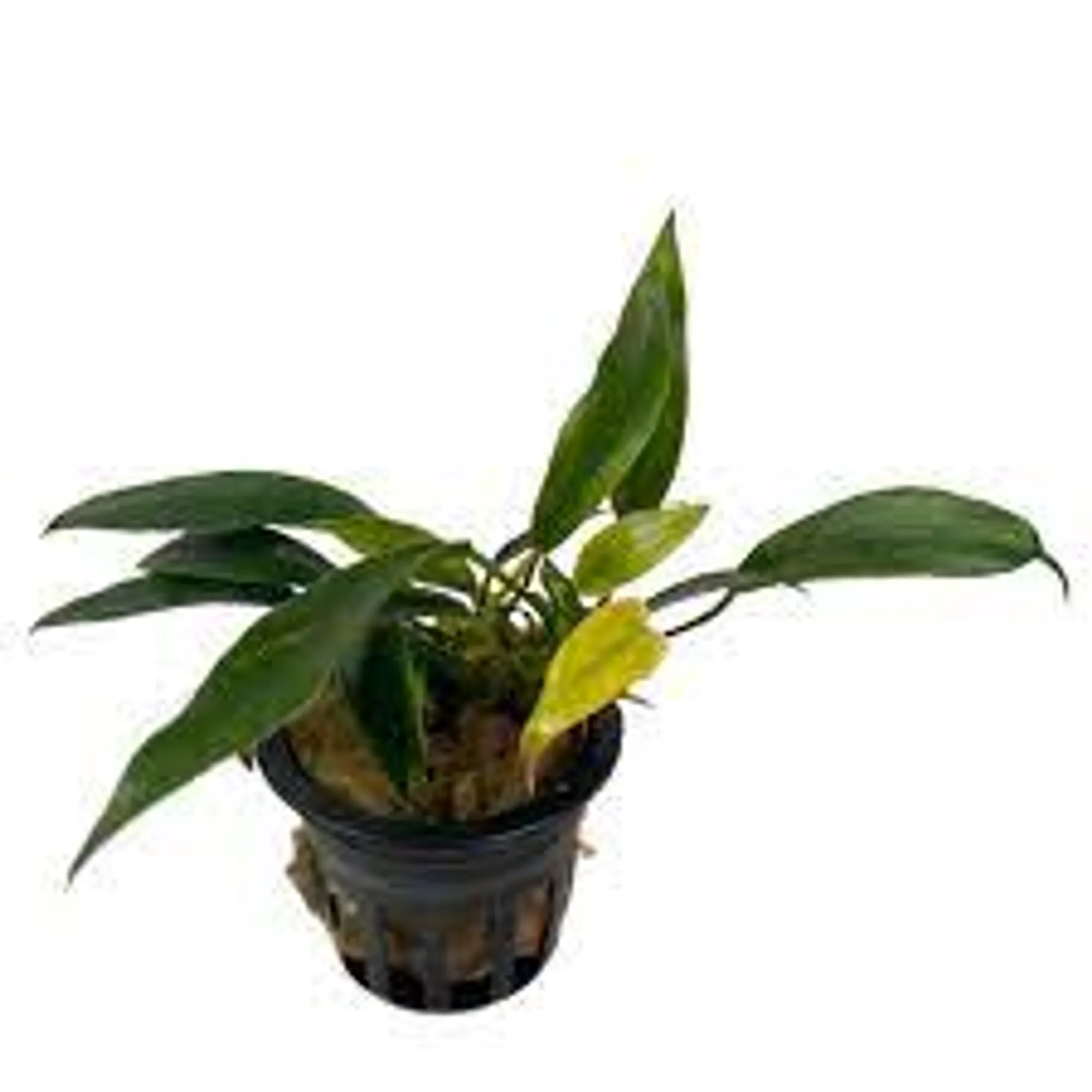

Product Details
Appearance: Anubias plants typically have dark green, broad leaves that are heart-shaped or lanceolate in shape, depending on the specific species or cultivar. The leaves are usually thick and leathery, which makes them less susceptible to damage and more resistant to herbivorous fish.
Growth: Anubias plants have a slow to moderate growth rate. They are known for their compact growth habit, forming rosettes of leaves that can create a visually appealing display in the aquarium. Regular pruning and removal of old or damaged leaves may be necessary to maintain the plant's health and appearance.
Lighting and CO2 Requirements: Anubias plants are not demanding in terms of lighting requirements. They can thrive in low to moderate lighting conditions. They can also grow well without the need for additional carbon dioxide (CO2) supplementation, although the presence of natural or liquid carbon sources in the aquarium can benefit their growth.
Water Parameters: Anubias plants are adaptable to a wide range of water parameters. The following ranges are generally suitable:
- Temperature: 72-82°F (22-28°C)
- pH: 6.0-7.5
- Hardness: Soft to moderately hard water (2-15 dKH)
Placement and Propagation: Anubias plants are often used as midground or background plants in aquariums. They should be attached to rocks, driftwood, or other hardscape materials using fishing line or plant-safe glue. The rhizome, which is the thick stem from which the leaves emerge, should not be buried in the substrate but kept above it. Anubias plants can be propagated by dividing the rhizome and attaching the divisions to new hardscape materials.
TCulture Anubias Chili Jalapeno
Product Options
Regular
Delivery
 East Ocean Aquatic Havelock
East Ocean Aquatic Havelock Aquarium Fishes, Tanks & Supplies From East Ocean Aquatic Havelock


 SG
SG


